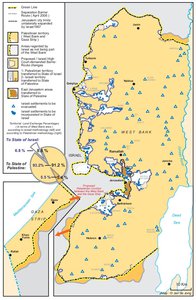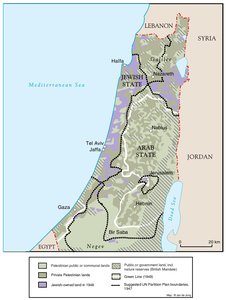LAND OWNERSHIP IN PALESTINE, 1948
Map Details
The UN Partition Plan denied the demographic facts in Palestine no more than it did the ownership of land.
The Mandate authorities had furnished UNSCOP with statistics showing Jewish land ownership to reach no
more than 39% in any one sub-district and remain far less in all others. In December 1947,
Jewish landholdings totaled 1,734 km2, or 6.6% of the total territory. The majority of the remainder was in
Palestinian ownership, either communal or private, while state lands and nature reserves were not
extensive in the area allotted the Jewish state in the plan. The exception was the Beersheba district, where
85% of the area was state land.
As illustrated on previous pages, Palestinians were, up until 1947, a mostly agricultural, rural
people. Landownership was the foundation of the predominant culture and economy. Some 60-62% of the
labor force in 1947 were fellahin living in the countryside. Their knowledge and expertise, in contrast to that
of the Jewish population, was tied definitively to the land they lived and worked on for generations.
Long before 1948, the Zionists had confronted the question of land ownership and the obstacle it posed to
achieving the desired territorial and demographic supremacy in Palestine. 10 years prior to the war,
Menachem Ussishkin, head of the Jewish National Fund (JNF) and a veteran proponent of the ‘transfer’
doctrine, had addressed the discrepancy between the mass-settlement policy of the WZO and the meager
landholdings of the JA. He told the Agency, “[w]e must remove from here 60,000 Arab families in order to
release land for the Jews.” With the outbreak of hostilities following the 1947 UN vote, Ben-Gurion
announced: “The war will give us the land. The concepts of ‘ours’ and ‘not ours’ are peace concepts, and in
war they lose their whole meaning.”
The refugees who were forced from Palestine in the 20 months following Resolution 181 left behind all they
could not carry. It is impossible to calculate the extent of the land losses with any accuracy, but in terms of
cultivated land, records show they left at least 40,000 dunums of vineyards, nearly 100,000 dunums of
citrus groves and more than 80% of Mandate Palestine’s 4.3 million dunums of field crops. Some 95% of
what became Israel’s olive groves were Palestinian owned in 1948. At the end of the Mandate, Palestinians
had cultivated some 5,484,700 dunums. At the end of the war, the entire land area left under Arab rule
amounted to only 5,948,320. Of Israel’s 20,371,680 dunums, only 7.23% had been Jewish property before
the war.
Having decided that “there could be no speaking of a return of Arabs,” the new Israeli government set about
consolidating its long-sought grasp on Palestinian land. Mid-way through the war, a Ministerial Committee
for Abandoned [Arab] Property was formed to distribute and administer the new gains. The first act of the
‘provisional’ government of Israel was the abolition of all restrictions on land transfers. After the war, Israel
passed two key laws which ‘legalized’ (in domestic terms) their illegal (in international terms) war booty. The
Absentees Property Law and the Development Authority Law gave the government and the JNF exclusive
rights over virtually all Palestinian land in the new Jewish state. Even that minority of Palestinians which
had remained within the boundaries of Israel was dispossessed by virtue of this legislation and the military
orders which accompanied it. The amount of land expropriated from this minor source in 1948 alone
exceeded all Jewish pre-1948 landholdings.
Uprooting the Palestinians from their land and taking possession thereof had - in one form or another - been
the overarching goal of Zionism for 50 years. Between 1947 and 1949, this goal was mostly achieved - and
the state of Israel was established.
Related Maps
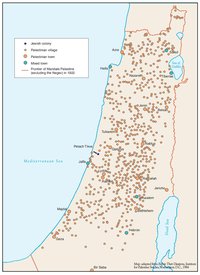
OTTOMAN PALESTINE, 1878
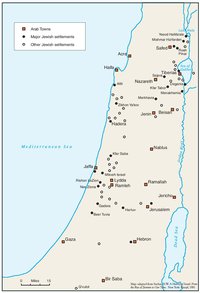
ARAB TOWNS AND JEWISH SETTLEMENTS IN PALESTINE, 1881-1914
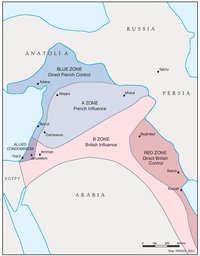
THE SYKES-PICOT AGREEMENT, 1916
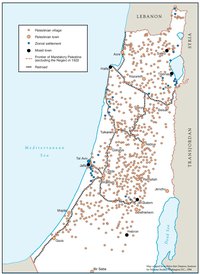
THE BEGINNING OF THE BRITISH MANDATE, 1920
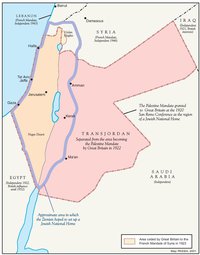
PALESTINE UNDER THE BRITISH MANDATE
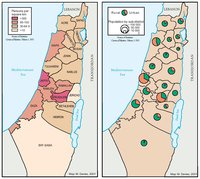
THE DEMOGRAPHY OF PALESTINE, 1931
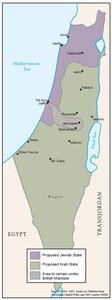
THE PEEL COMMISSION PARTITION PROPOSAL, 1937
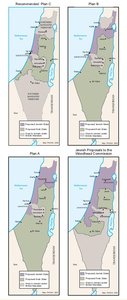
THE WOODHEAD COMMISSION PARTITION PROPOSALS, 1938
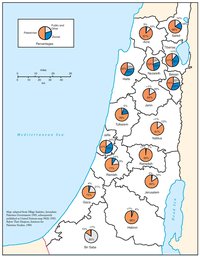
PALESTINIAN AND ZIONIST LANDOWNERSHIP BY SUB-DISTRICT, 1945
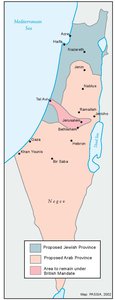
THE MORRISON-GRADY PARTITIONED TRUSTEESHIP PLAN, 1946
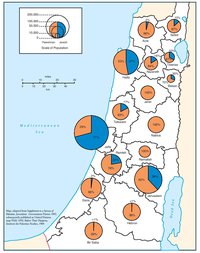
POPULATION OF PALESTINE BY SUB-DISTRICT, 1946
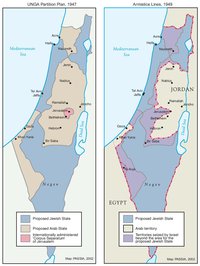
THE UNGA PARTITION PLAN, 1947 – THE 1948 WAR & THE 1949 ARMISTICE LINES
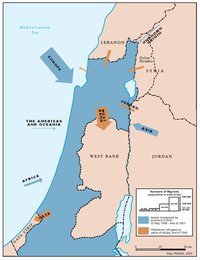
POPULATION MOVEMENTS, 1948-1951
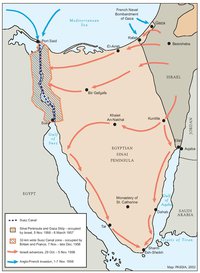
THE SUEZ WAR, 1956
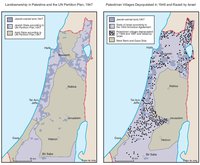
LAND OWNERSHIP IN PALESTINE AND THE UN PARTITION PLAN - PALESTINIAN DEPOPULATED AND DESTROYED VILLAGES, 1948-1949
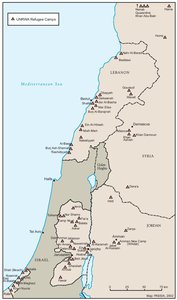
THE PALESTINIAN DIASPORA, 1958
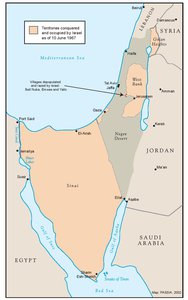
THE NEAR EAST AFTER THE JUNE 1967 WAR
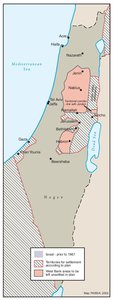
THE ALLON PLAN, JUNE 1967
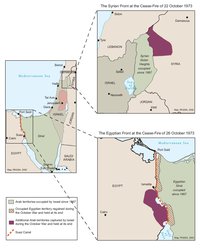
THE OCTOBER WAR, 1973
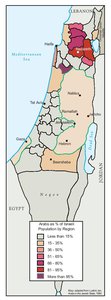
THE PALESTINIANS INSIDE ISRAEL, 1977
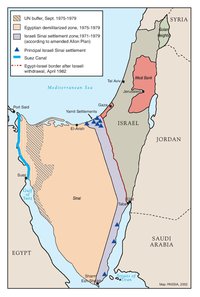
THE CAMP DAVID ACCORDS, 1978-1979
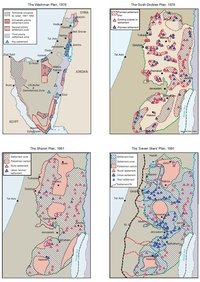
ISRAELI SETTLEMENT MASTER PLANS, 1976-1991
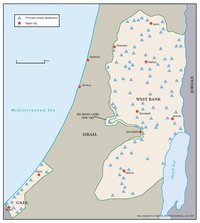
THE 1991 MADRID PEACE CONFERENCE & ISRAELI SETTLEMENTS
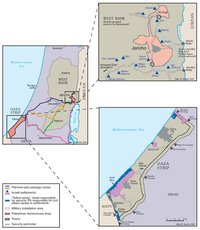
GAZA-JERICHO (OSLO I) AGREEMENT, CAIRO, 4 MAY 1994
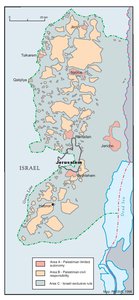
INTERIM (OSLO II) AGREEMENT, TABA, 28 SEPTEMBER 1995
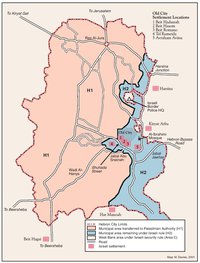
HEBRON PROTOCOL, 15 JANUARY 1997
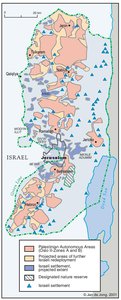
WYE RIVER MEMORANDUM, 23 OCTOBER 1998
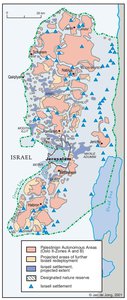
SHARM ESH-SHEIKH AGREEMENT, 4 SEPTEMBER 1999
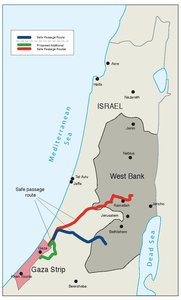
PROTOCOL CONCERNING SAFE PASSAGE BETWEEN THE WEST BANK AND THE GAZA STRIP, 5 OCTOBER 1999
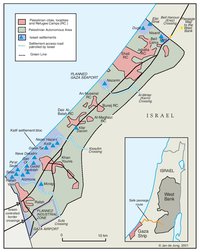
GAZA, 2000
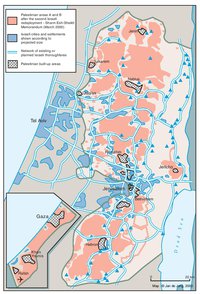
WEST BANK AND GAZA STRIP, MARCH 2000
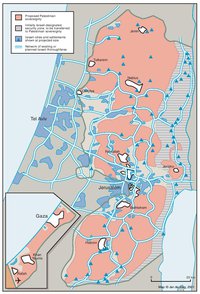
CAMP DAVID PROJECTION, JULY 2000
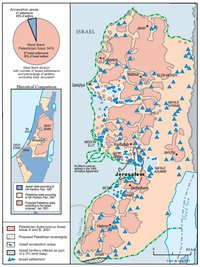
TABA TALKS PROJECTION, JANUARY 2001
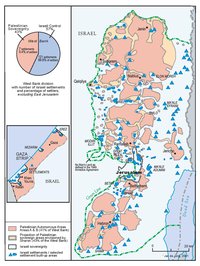
THE SHARON PROPOSAL, SPRING 2001
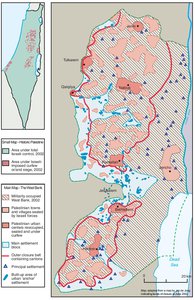
THE REINVASION OF THE PALESTINIAN TERRITORIES, 2001-2002
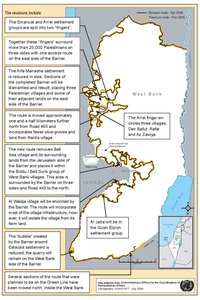
THE ROAD MAP, 2003
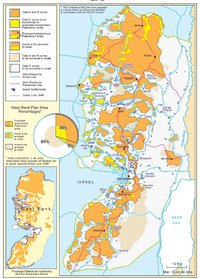
THE GENEVA INITIATIVE AND ACCORD, 2003
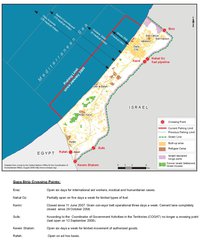
THE ISRAELI DISENGAGEMENT PLAN, 2003-2005
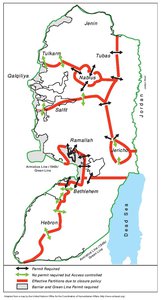
AGREED DOCUMENTS ON MOVEMENT AND ACCESS FROM AND TO GAZA, 2005
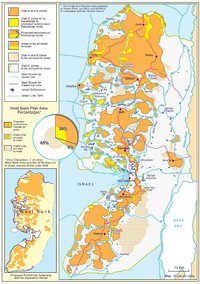
THE SETTLERS' PLAN FOR PALESTINIAN AUTONOMY, 2006
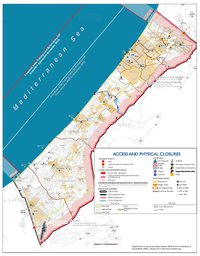
THE GAZA STRIP TODAY (2014)
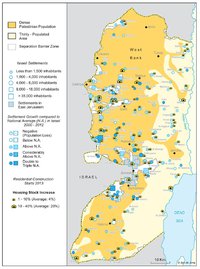
THE WEST BANK TODAY (2014)
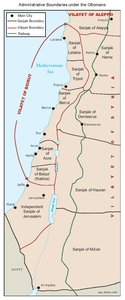
ADMINISTRATIVE BOUNDARIES
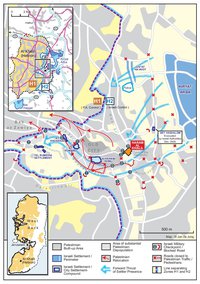
HEBRON
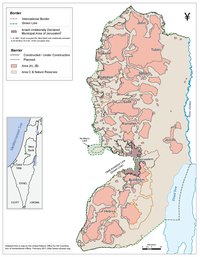
Area C
